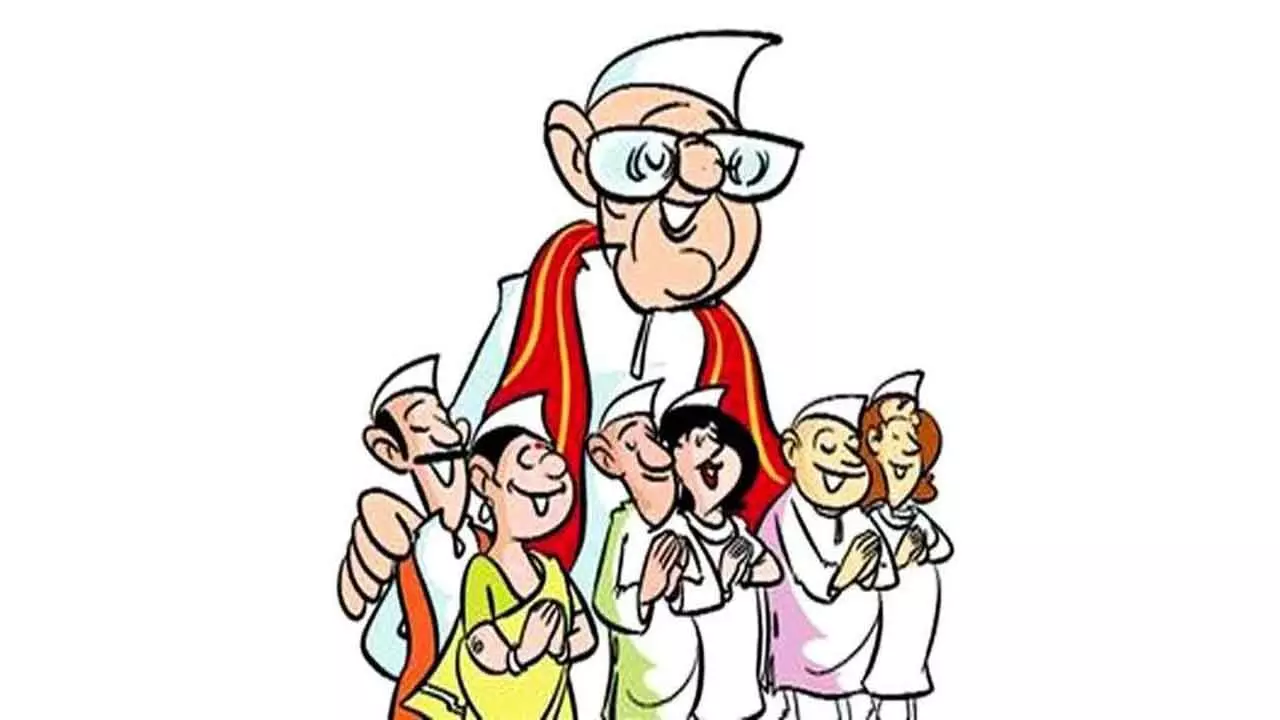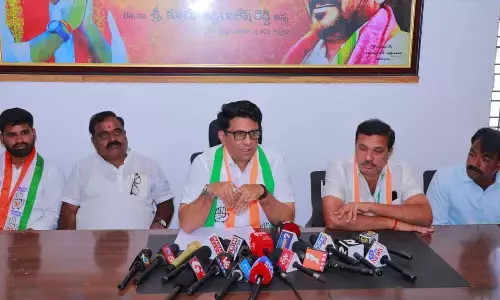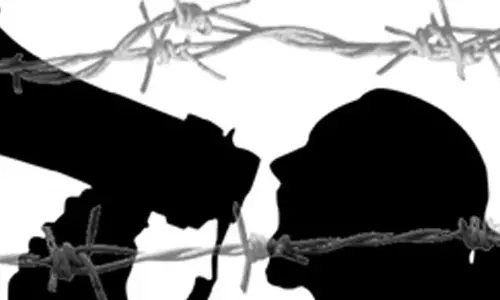‘Aaya Ram, Gaya Ram’ politics persist

Where are niti, dharma, and raj niti as party hopping is rampant before and after polls?
While the exact number of politicians who have switched parties in India is difficult to quantify, it’s clear that party switching has been a significant phenomenon in Indian politics. Most of these leaders who switch over cite the examples of: ideological alignment and desire for stability, lack of transparency and authoritarianism within the party, lack of opportunities and ideological differences. Joining a ruling party can also offer protection from prosecution, a kind of immunity - a ‘SURAKSHA CHAKRA’ around them
Elections in our country is a Carnival of democracy whether it is state elections or General elections. You can see the high drama, spectacle and color, along with the hurly-burly, exuberant noise and of course the most interesting aspect is ‘Netas’ switching over from one party to another. Party switching is any change in political party affiliation of a partisan public figure, usually one currently holding elected office. In India before 1985, switching party was frequent. Aaya Ram Gaya Ram was the term used for such politicians, who keep waiting on the fence to jump at an opportune moment, those who indulge in political horse trading in the legislature by the elected politicians and political parties.
Now let us find out how the term Aaya Ram/Gaya Ram was coined. Gaya Lal, M.L.A from Hodal in Haryana won elections as an independent candidate in 1967 and joined Indian National Congress and there after changed parties thrice within a fortnight, first politically defecting to the United Front from INC, then back and then forth, with in nine hours to United Front again. When Gaya Lal quit the United Front and joined Congress, then INC leader Rao Birendra Singh, who was instrumental for Gaya Lal’s defection presented him at a press conference at Chandigarh and declared, ‘Gaya Ram was now Aaya Ram’.
Hence the term originated in Haryana in 1967 due to excessive horse trading and several rounds of political defections by serial turncoats within a span of few weeks resulting in the dissolution of Haryana assembly. Fresh elections were held in 1968. After 1967 several parties in India often indulged in horse trading to grab power. To end this trend the anti-defection law was introduced in 1985. The trend continues till today by exploiting the loopholes in existing anti-defection law. This misuse is due to the collusion of corrupt politicians or parties with the partisan speaker or governor.
With the Election Commission’s announcement of another round of Assembly Elections in the crucial states of Maharashtra and Jharkhand, and bypolls to several assemblies and Lok Sabha seats across the states, they have huge implications for two major parties – the Congress and the BJP. During the Lok Sabha elections and Assembly elections, many political leaders switched parties this year. From Milind Deora to Ashok Chavan to murdered Baba Siddique to Ritesh Pandey jumped into new parties. The recent setback suffered by the Gujarat Congress with the exit of former state chief Arjun Modhwadia is just a blip in the spectrum of leaders who have jumped on the political band wagon. Along with Arjun Modhwadia, who quit just before Rahul Gandhi led-Bharat Jodo Nyaya Yatra entered the state, Gujarat Congress working president quit the party and joined BJP, citing the reason that the Congress leadership turned down the invitation to attend the Ram Temple consecration in Ayodhya, which he felt was ‘unreasonable’. It was in a way his ‘ghar wapsi’.
India had seen a significant number of politicians switching parties over the years. Since 2014, at least 25 prominent politicians from opposition parties joined the BJP. From Congress, 10 leaders including Ashok Chavan and Navin Jindal joined it in 2014. From NCP, 4 leaders including Ajit Pawar and Praful Patel walked into BJP in 2023, followed by 4 leaders from Shiv Sena. 3 from TMC, 2 from TDP. 1 each from SP and YSRCP. Interestingly 23 of these 25 leaders have had corruption cases against them either closed, stalled or put in cold storage, after joining the BJP. Some notable examples include Himanta Biswa Sarma who joined BJP from Congress in 2015, Suvendu Adhikari from TMC to BJP, Chaagan Bujbal from NCP to BJP, Jyotiraditya Scindia from Congress to BJP. While the exact number of politicians who have switched parties in India is difficult to quantify, it’s clear that party switching has been a significant phenomenon in Indian politics. Most of these leaders who switch over cite the examples of: ideological alignment and desire for stability, lack of transparency and authoritarianism within the party, lack of opportunities and ideological differences. In the high- stake world of politics, leaders frequently change parties in the hope of securing a ticket if denied by the parent party. An elected representative should not be allowed to switch parties unless he or she forgoes MLA or MP seat and reelection happens there. This will act as a good check point for politicians switching over for political gains. This unethical practice needs to be stopped. It will put curb on the horse trading. Representatives intending to switch parties/switched parties should not be allowed to contest the immediate next election on a ticket from new party. This will ensure a minimum cooling period of 5 years and any recent event that might influence the voters will get neutralized. In this way ‘buying and selling’ of elected representatives can be halted for some time. Even if they are expelled from the party from where they won the seat, they should not be allowed to join another riding party.
Also, there is a provision allowing 2/3rd MLAs of a party to merge their party with another party or form a new party. In June 2022, Maharashtra witnessed a sudden change in government, with Eknath Shinde becoming the new Chief Minister in alliance with the BJP, separating from parent party Shiv Sena.
Keeping in mind party switching can be complex, and individual motivations may vary, several factors attract politicians to switch parties in this country. Joining a ruling party or party with significant influence and power can provide access to coveted positions, resources and decision-making authority. Switching to a party with stronger electoral prospects can increase a politician’s chances of winning elections. Politicians may switch to a party whose ideology better aligns with their own beliefs or values. Personal ambition of some politicians seeks greater visibility, recognition of leadership roles within a new party. Joining a ruling party can also offer protection from prosecution, a kind of immunity - a ‘SURAKSHA CHAKRA’ around them.
Local factors like regional politics, caste dynamics or community influence can also be triggers for party hopping. Changes in party leadership, internal conflicts, fundamental disagreements with their current party may prompt politicians to switch. In some cases, politicians may switch parties to safeguard their political careers or maintain relevance. The pre-election period where the leaders change over to from one political party to another is ‘dance of democracy’, and the people mutely become the witnesses of the ‘farce of democracy’.
Why are our emotions linked with party victory or loss? A total of 18 candidates in the phase 1 of General Elections changed their party, when ‘great realization’ dawned upon them a few weeks before the general elections. The voter is puzzled and unsure whether the person voted for, based on party’s ideology would stay with it or overnight change his ideals.
Scholarly efforts at understanding Indian voters have often focused on gauging their response to issues – the economy, unemployment, welfare or examining their identity politics through the lenses of caste, class and religion. What about the focus on the politicians/candidates changing their parties before and after elections. Is it really emotion, loyalty or necessity that compels them to switch over from one party to another.
Chanakya Niti is not a temporal manual. It has permanent wisdom. Its principles are applicable at all times to come.

















